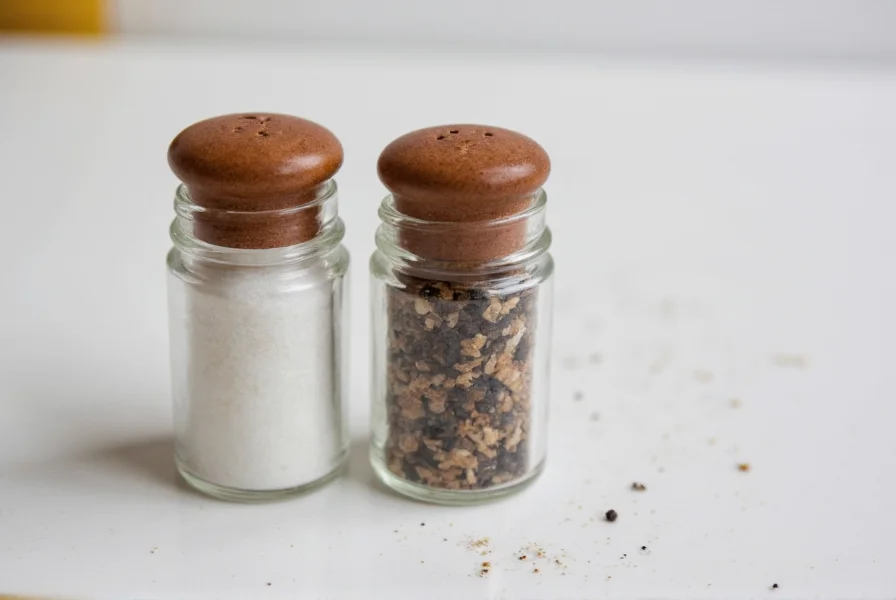When kitchen real estate is limited or portability matters, tiny salt and pepper shakers deliver surprising utility without sacrificing style. These miniature seasoning solutions have evolved from simple novelty items to practical kitchen tools meeting specific spatial and aesthetic needs. Unlike standard shakers that dominate tabletops, their compact counterparts blend functionality with discreet elegance.
The Evolution of Compact Seasoning Containers
While salt cellars date back to ancient civilizations, dedicated salt and pepper shakers emerged in the 19th century. The miniature version gained popularity during the mid-20th century space race era when compact living became fashionable. Today's tiny shakers combine historical craftsmanship with modern materials science, solving the perennial challenge of seasoning control in confined spaces.
Materials and Manufacturing Considerations
Material selection critically impacts both functionality and durability in miniature shakers. Each option presents distinct advantages:
| Material Type | Shaker Height Range | Key Advantages | Practical Limitations |
|---|---|---|---|
| Stainless Steel | 1.75-2.5 inches | Corrosion-resistant, precise hole drilling | Limited decorative options |
| Ceramic | 2-3 inches | Variety of decorative finishes | Fragile, inconsistent hole sizing |
| Acrylic | 1.5-2 inches | Translucent design, lightweight | Scratches easily, static issues |
| Wood | 2-2.75 inches | Natural aesthetics, good grip | Requires seasoning, moisture sensitivity |
The engineering challenge with miniature shakers lies in maintaining proper dispensing mechanics at reduced scales. Manufacturers use laser drilling to create precise 0.5-0.8mm holes that prevent clogging while controlling flow. Unlike larger shakers where gravity assists distribution, tiny versions require carefully calibrated hole patterns that work with minimal wrist movement.

Practical Applications and Space-Saving Benefits
Tiny salt and pepper shakers excel in specific environments where standard dispensers prove impractical. For RV enthusiasts, these compact containers save crucial inches in cramped galley kitchens. Marine kitchens benefit from their stability during vessel movement, with many models featuring weighted bases. Apartment dwellers with limited countertop space appreciate how miniature shakers disappear into utensil drawers when not in use.
Professional chefs utilize miniature shakers for precise seasoning during plating, while travelers value their portability in camping cooksets. The hospitality industry employs them for elegant table settings where oversized shakers would disrupt visual harmony. When selecting miniature shakers for specific applications, consider these factors:
- Travel needs: Look for sealed tops and durable materials like stainless steel
- Decorative use: Ceramic or acrylic options provide visual appeal
- Precision seasoning: Models with adjustable shaker holes offer control
- Small kitchen storage: Stackable designs maximize limited cabinet space
Maintenance Challenges and Solutions
Maintaining tiny salt and pepper shakers requires different techniques than standard versions. The primary challenge involves preventing salt crystallization in microscopic holes. Food scientists recommend using fine-grain sea salt rather than coarse varieties in miniature dispensers. For pepper, freshly ground varieties work better than pre-ground in these compact containers.
Cleaning miniature shakers demands patience. Never submerge ceramic or wooden models completely. Instead, use a soft toothbrush with warm water to gently clean interior surfaces. For stubborn residue, a vinegar-water solution (1:3 ratio) works effectively without damaging materials. Always dry components thoroughly before reassembly to prevent moisture-related issues.
Design Innovations in Miniature Seasoning
Recent advancements have addressed traditional limitations of tiny shakers. Magnetic closure systems prevent accidental spills during transport. Some models feature interchangeable tops with varying hole patterns for different seasoning textures. Vacuum-sealed designs maintain freshness for extended periods, particularly valuable for travel applications.
Interior coatings have improved significantly, with non-stick ceramic linings reducing residue buildup. Ergonomic designs now accommodate smaller hand sizes while maintaining comfortable grip. These innovations transform what was once merely decorative into genuinely functional kitchen tools that solve real spatial challenges without compromising performance.
FAQ: Tiny Salt and Pepper Shakers
Can tiny salt shakers effectively dispense coarse sea salt?
Most miniature salt shakers work best with fine-grain salt due to their smaller dispensing holes. For coarse sea salt, look for models specifically designed with larger perforations or adjustable shaker tops that accommodate different salt textures without clogging.
How do I prevent my tiny pepper shaker from clogging?
To prevent clogging in miniature pepper shakers, use freshly ground pepper rather than pre-ground varieties. Store shakers with the holes facing upward when not in use, and periodically clean the holes with a small pin or toothpick. Avoid exposing them to moisture, which causes pepper to clump.
Are tiny salt and pepper shakers suitable for children's use?
Yes, miniature shakers can be excellent for children when designed with safety in mind. Look for models with rounded edges, non-toxic materials, and appropriate hole sizes that prevent over-seasoning. Their smaller size fits better in children's hands, promoting independence during meals while minimizing spills.
What's the ideal height for functional tiny salt and pepper shakers?
The most functional miniature shakers typically measure between 1.75 and 2.5 inches in height. This range provides sufficient capacity (approximately 1-2 tablespoons) while maintaining stability and ease of handling. Shakers under 1.5 inches often become difficult to fill and handle regularly.
How often should I clean my tiny seasoning shakers?
Miniature shakers require more frequent cleaning than standard versions due to their smaller openings. Clean ceramic and stainless steel models every 2-3 weeks with warm water and mild soap. Wooden shakers need only occasional wiping with a damp cloth to preserve their integrity. Always ensure complete drying before refilling to prevent moisture-related issues.











 浙公网安备
33010002000092号
浙公网安备
33010002000092号 浙B2-20120091-4
浙B2-20120091-4